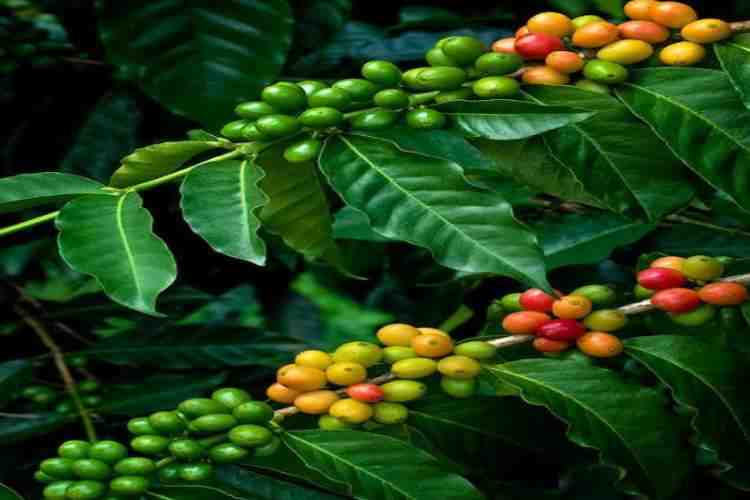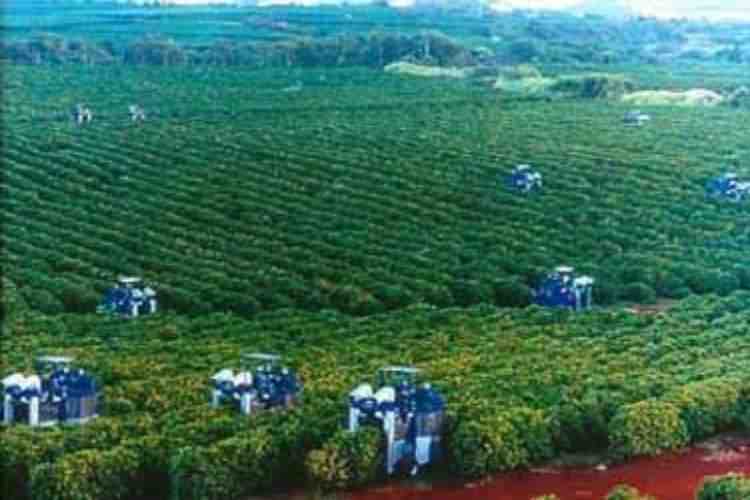
What range of climates can coffee trees be cultivated in?
Many people think of coffee as coming from a tropical climate, but the reality is that coffee trees can be cultivated in various environments. In this post, we will explore the different temperatures where trees can produce coffee and how this affects the taste of the coffee.
From hot and humid to cold and dry, coffee trees can be grown in various climates. However, not all environments are ideal for producing high-quality coffee. Generally, the best conditions for coffee cultivation are moderate temperatures, ample rainfall, and rich soil. While many factors affect the taste of coffee, the climate is one of the most important. So, next time you enjoy a cup of joe, think about where it came from and how the weather might have affected its flavor.
Coffee is one of the world’s most popular drinks and is second only to water consumption. With around 2.25 billion cups consumed each day, it’s no wonder we’re all wondering what types of climates coffee-trees can be cultivated in. The particular circumstances must meet for these plants to grow and thrive and how they adjust to various climatic conditions.

1. What factors affect a coffee tree’s ability to grow and produce coffee beans?
Many factors affect a coffee tree’s ability to grow and produce coffee beans. The most crucial factor is the climate. Coffee trees need warm, humid conditions to thrive. They also need lots of rainfall and well-drained soil.
Other important factors include the coffee tree type, the tree’s age, and its care. Coffee trees are delicate and require special care to produce high-quality beans.
During coffee beans production, a coffee tree needs several vital things: sunlight, water, well-aerated soil with good drainage, and temperatures that remain between 60 and 75 degrees Fahrenheit (15.5 and 23.8 degrees Celsius) during the day and no lower than 50 degrees Fahrenheit (10 degrees Celsius) at night. With these conditions met, a coffee tree can grow and produce beans anywhere in the world between the Tropics of Cancer and Capricorn.
The sunlight a coffee tree gets daily affects how many coffee beans it produces. In general, more sun means more beans. However, too much sun can damage the tree’s leaves and reduce the bean quality.
Coffee trees need 1 to 2 inches (2.5 to 5 cm) of water per week. They can get this from rainfall or irrigation. If rain is insufficient, farmers must supplement with irrigation. Too much or too little water can both harm the tree and reduce bean quality.
The soil must be well aerated and have good drainage to support a coffee tree’s root system. The ground should also have plenty of organic matter to hold moisture and nutrients. Poor soils can lead to stunted growth, decreased bean quality, and even death in extreme cases.
Finally, the temperature is essential to a coffee tree’s ability to grow and produce beans. The ideal temperature range for a coffee tree is 60 to 75 degrees Fahrenheit (15.
2. Why is climate important for a coffee tree?
The climate is essential for a coffee tree because the temperature, rainfall, and sunlight all affect how the coffee tree grows. A suitable environment can help the coffee tree produce more fruit and improve the coffee beans’ quality.
Climate is essential for a coffee tree because it determines the amount of rainfall and sunlight it receives. Too much or too little can adversely affect the tree’s growth and yield. The suitable climate also helps to ensure that the coffee cherries ripen evenly, which is essential for producing high-quality coffee beans.
Climate is important for coffee trees because it affects their growth, yield, and flavor. For example, a coffee tree grown in a warm climate will mature faster and produce more fruit than a tree grown in a cooler temperature. However, the flavor of the coffee beans may be affected by the climate. For instance, beans grown in hot, dry weather may have a different flavor than beans grown in an excellent, wet environment.
3. What range of climates can coffee trees be cultivated in?
There are many factors to consider when determining which climate is suitable for cultivating coffee trees. The most important factor is temperature. Environments for coffee trees can only be acquired where temperatures stay above freezing throughout the year.
Coffee trees also require a lot of sunlight and rainfall. They will not thrive in hot or cold climates or areas with very little rain.
The ideal climate for coffee trees has moderate temperatures and consistent rainfall. This type of climate is found in many parts of the world, including Central America, South America, Africa, and Asia.
4. How does altitude impact the growth and production of coffee beans?
The ideal elevation for coffee cultivation is between 1,600 and 2,000 meters above sea level. Above 2,000 meters, the air is too thin for the coffee trees to produce fruit properly. Between 1,600 and 2,000 meters, the air is light enough to provide a consistent day and night temperature difference, which helps the coffee beans to develop their flavor. Below 1,600 meters, the air is too thick and humid for coffee trees to thrive.
At altitudes below 1,600 meters, the coffee trees will produce more fruit, but the quality of the beans will be lower. The higher altitude stresses the coffee tree flowers, affecting pollination. Lower temperatures also slow down photosynthesis which reduces bean size. All of these factors lead to a decrease in coffee quality.
5. What effect does soil quality have on the growth and production of coffee beans?
When it comes to coffee production, soil quality is essential. The suitable soil can help coffee trees thrive and produce high-quality beans. Conversely, poor soil quality can lead to stunted growth and low bean yields.
A few key factors contribute to good soil quality for coffee production. First, the soil should be well-drained to prevent waterlogging and ensure that roots have access to oxygen. Second, the soil should be rich in nutrients, so plants have everything they need to grow strong and healthy. Finally, the pH of the soil should be slightly acidic, around 6.0-6.5.
If you’re looking to cultivate coffee trees, finding an area with good soil quality is essential. It will give you the best chance for success in terms of growth and yield.
What range of climates can coffee trees be cultivated in?
Coffee trees are native to tropical and subtropical regions but can be cultivated in various climates. They tolerate a wide range of temperatures and rainfall but prefer warm, humid conditions with plenty of rain.
Coffee trees will grow best in soils that are well-drained and rich in organic matter. They need full sun to thrive and will not do well in shady areas. If you live in a room with cool winters, you can grow coffee trees in containers and bring them indoors when the weather gets cold.
The different types of coffee trees
Coffee trees are classified into two main types: arabica and robusta. Arabica coffee trees are native to the mountains of Ethiopia, while robusta coffee trees are native to central and western Africa.
Arabica coffee trees grow to about 10 meters in height and have large, dark green leaves. The flowers of the arabica coffee tree are white and fragrant, and the fruit is a small, red berry. Arabica coffee beans are elongated and have a light brown color. They are more aromatic and have a higher acidity than robusta coffee beans.
Robusta coffee trees grow to about 12 meters in height and have larger, darker green leaves than arabica coffee trees. The flowers of robusta coffee trees are yellowish-white, and the fruit is a small, red berry. Robusta coffee beans are rounder than arabica beans and have a dark brown color. They contain more caffeine than arabica beans and have a bitter taste.
The best climates for coffee trees
The best climates for coffee trees are those with moderate temperatures and ample rainfall. The ideal temperature range is between 68 and 77 degrees Fahrenheit, with rain of at least 60 inches per year. Coffee trees can also tolerate shade so that they can be grown under the canopy of more giant trees.
While coffee trees can technically be grown in a wide range of climates, the above conditions are optimal for producing high-quality coffee beans. If you’re looking to cultivate coffee trees, choosing a location within this ideal range is best.
How climate affects coffee production
The coffee plant is a tropical evergreen shrub that thrives in hot, humid climates with plenty of rainfall. It can be grown at altitudes ranging from sea level to about 6,000 feet, but the ideal measurement for coffee production is between 1,000 and 2,000 feet. The optimum temperature for coffee growth is between 68 and 75 degrees Fahrenheit, with nighttime temperatures below 60 degrees.
Coffee trees require a long, frost-free growing season of about six months to produce a crop. They also need a dry period during their growth cycle’s flowering and fruit-setting stage. If conditions are too wet or too dry during this stage, the flowers will drop off, and the coffee berries will not develop properly.
The amount of sunlight coffee trees receives also affects their yield and quality. Coffee plants grown in full sun produce more caffeine than in the shade. Shade-grown coffee beans are smaller and have a higher acidity than sun-grown beans.

Finally, the type of soil coffee trees gets planted in also affects their growth and yield. Coffee plants do best in well-drained soils that are high in organic matter. The roots of coffee plants are shallow, so they need loose, aerated soil that retains moisture but drains well.
Conclusion
Coffee trees are versatile and can be cultivated in various climates. The ideal environment for coffee cultivation is between the Tropics of Cancer and Capricorn, where there is plenty of sunlight and rainfall. However, coffee trees can also be grown in temperate climates with enough water and protection from frost. You can cultivate your coffee trees in a tropical or temperate climate.
The coffee tree is a versatile plant that can be grown in various climates. While the ideal environment for growing coffee is tropical, with warm temperatures and ample rainfall, coffee trees can thrive in subtropical and temperate climates.
Coffee trees need a minimum temperature of around 15 degrees Celsius to flower and produce fruit, so they will not grow well in cold climates. However, they are relatively drought-tolerant and can survive in dry conditions as long as they have access to water.
With proper care, coffee trees can yield delicious coffee beans for many years. By understanding the needs of the coffee tree and providing the right conditions, growers can produce high-quality coffee regardless of location.



